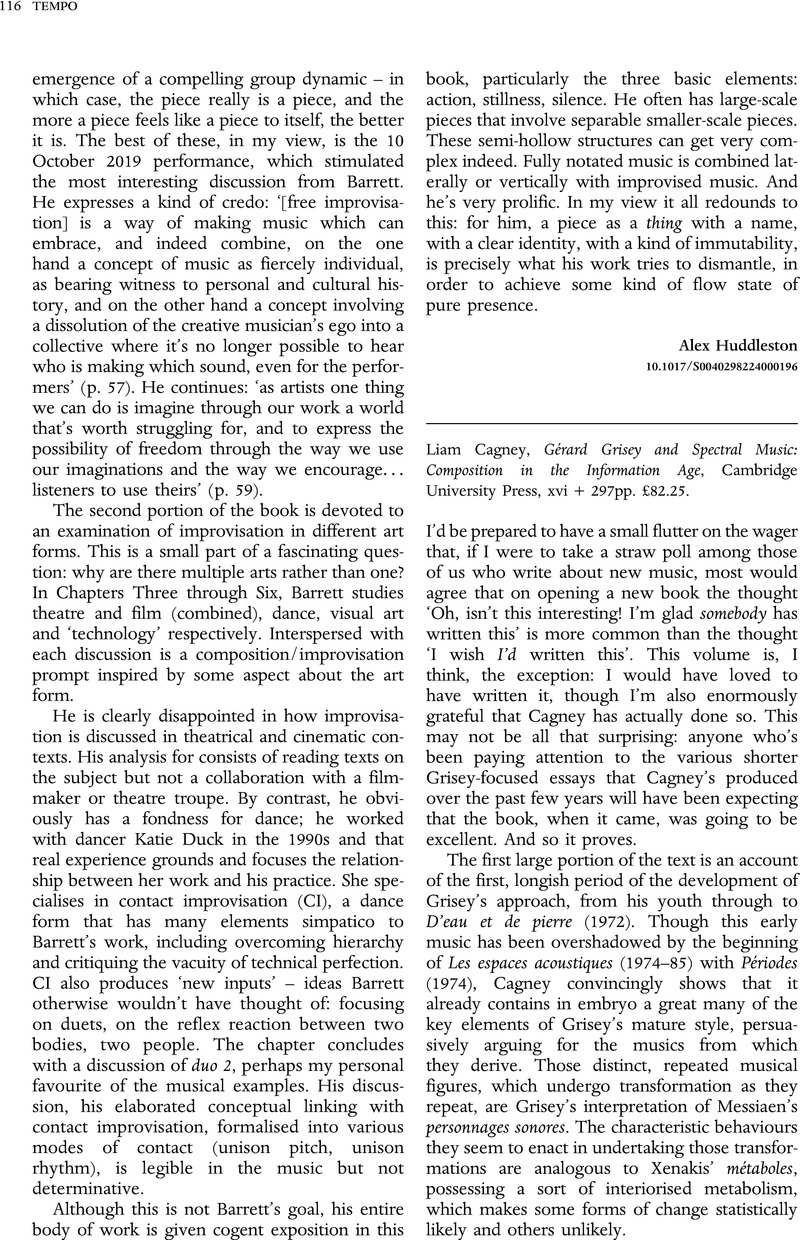No CrossRef data available.
Liam Cagney, Gérard Grisey and Spectral Music: Composition in the Information Age, Cambridge University Press, xvi + 297pp. £82.25.
Review products
Liam Cagney, Gérard Grisey and Spectral Music: Composition in the Information Age, Cambridge University Press, xvi + 297pp. £82.25.
Published online by Cambridge University Press: 28 August 2024
Abstract
An abstract is not available for this content so a preview has been provided. Please use the Get access link above for information on how to access this content.

Information
- Type
- BOOKS
- Information
- Copyright
- Copyright © The Author(s), 2024. Published by Cambridge University Press


